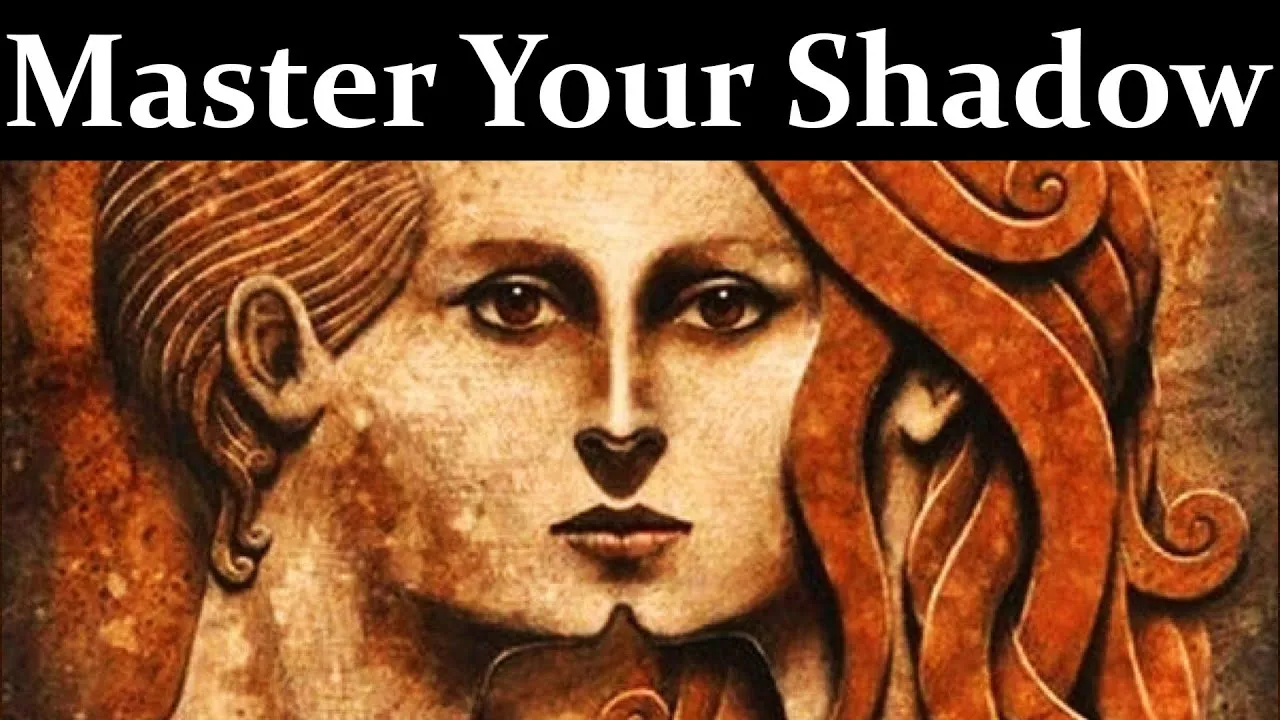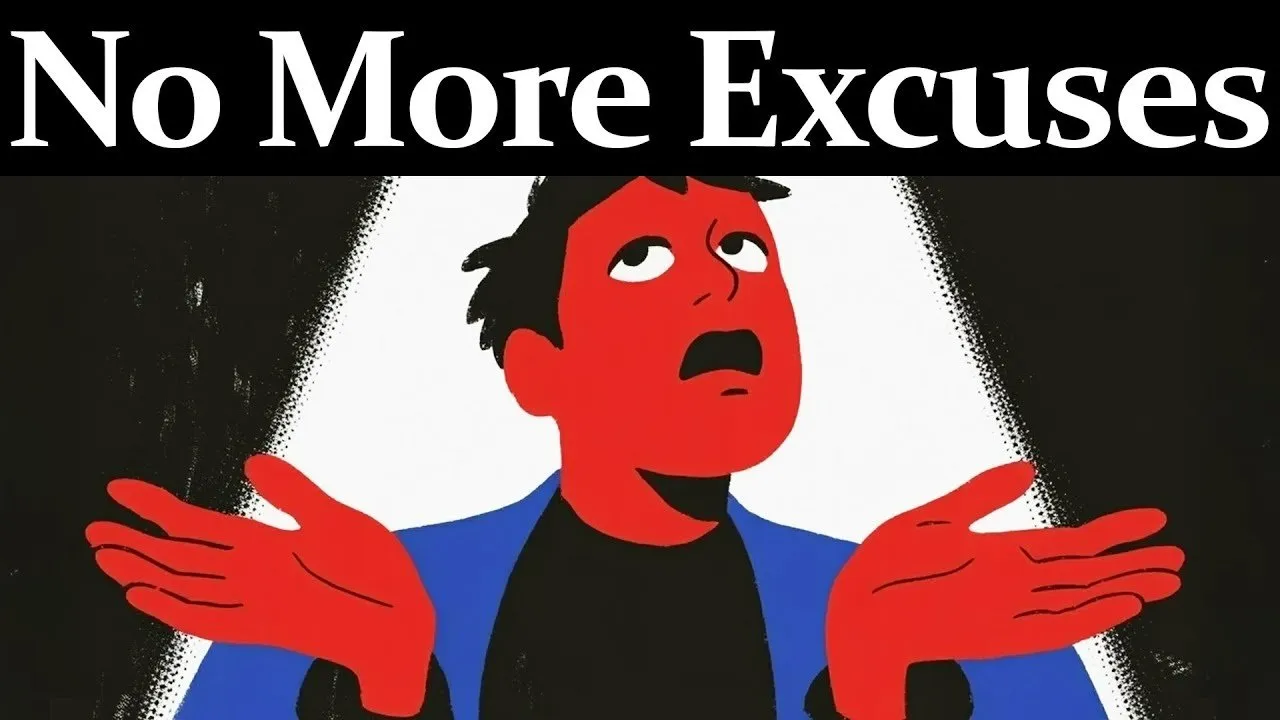Table of Contents
Complete Carl Jung course on shadow integration, persona dismantling, and individuation. Transform anxiety, depression, and emotional patterns through proven depth psychology methods.
Key Takeaways
- The Shadow contains all repressed aspects of personality—anger, envy, fear—that unconsciously control emotions and decisions when unintegrated
- Anxiety, depression, and explosive anger often stem from unresolved Shadow content rather than external circumstances or chemical imbalances
- The Persona (social mask) strengthens Shadow dominance by forcing authentic aspects into unconscious repression to maintain social acceptance
- Shadow recognition requires honest self-observation of disproportionate reactions, projections onto others, and patterns of emotional overwhelm
- Confronting the Shadow involves accepting uncomfortable truths about yourself without judgment, moving through denial, resistance, and toward integration
- Archetypes like Anima/Animus, Self, and Trickster emerge during individuation, serving as guides and obstacles in the integration process
- True emotional resilience comes not from eliminating difficult emotions but from conscious recognition and integration of all psychological aspects
- Shadow integration is lifelong work requiring daily practices like reflective writing, dream analysis, and mindful self-observation
Timeline Overview
- 00:00–05:30 — Course Introduction: Overview of Jung's psychology applications for anxiety, depression, and emotional suffering, plus framework for shadow work
- 05:30–12:15 — Understanding the Shadow: Definition of repressed psychological content, how childhood conditioning creates shadow material, and its unconscious influence
- 12:15–18:45 — Shadow Control Mechanisms: How unconscious content directs emotions and decisions, with examples of anxiety, anger, and self-sabotage patterns
- 18:45–25:30 — The Persona Problem: Social mask development, relationship between persona rigidity and shadow accumulation, plus energy costs of maintaining false self
- 25:30–32:00 — Recognizing Your Shadow: Practical identification methods through projections, emotional reactions, dreams, and body symptoms
- 32:00–38:45 — Confronting the Shadow: Process of conscious engagement with repressed content, including phases of denial, resistance, acceptance, and integration
- 38:45–45:15 — Archetypal Emergence: Role of Anima/Animus, Self, and Trickster archetypes in individuation process, with practical examples
- 45:15–51:30 — Emotional Intelligence Transformation: How shadow integration creates authentic resilience, reduced reactivity, and genuine self-acceptance
- 51:30–58:00 — Daily Integration Practices: Concrete methods for maintaining shadow awareness through dialogue, writing, dreams, mindfulness, and boundary-setting
- 58:00–END — Lifelong Commitment: Understanding individuation as continuous process, consequences of avoiding shadow work, and framework for ongoing development
Understanding the Shadow: Your Hidden Psychological Controller
Carl Jung's concept of the Shadow represents perhaps the most crucial insight in depth psychology—that we are not who we think we are. The Shadow encompasses everything you've learned to reject, repress, or deny about yourself since childhood. When parents praised your politeness but punished your anger, when society rewarded compliance but shamed selfishness, you unconsciously began splitting your personality into acceptable and unacceptable parts.
- Shadow formation begins in early childhood when authentic emotional responses meet social disapproval, creating unconscious repositories of repressed content
- Repressed material doesn't disappear but remains energetically active, influencing thoughts, feelings, and behaviors from the unconscious realm
- Anxiety often represents indirect Shadow manifestation, while depression frequently indicates accumulated unprocessed emotions trapped in psychological darkness
- Self-sabotage patterns typically emerge from Shadow attacks against conscious ego goals, creating internal conflicts between stated intentions and unconscious resistance
- The Shadow contains both destructive and creative potential—anger can become healthy boundaries, envy can reveal authentic desires, fear can indicate necessary caution
The fundamental misunderstanding most people have about emotional control stems from believing they can manage feelings through willpower alone. Jung demonstrated that unrecognized Shadow content operates autonomously, creating the very emotional chaos people desperately try to control through positive thinking or behavioral modification.
How the Shadow Controls Your Emotions and Decisions
Jung's most profound insight was that "until you make the unconscious conscious, it will direct your life and you will call it fate." This principle explains why so many emotional reactions feel automatic and uncontrollable—they're responses from unconscious complexes operating under Shadow command.
- Disproportionate emotional reactions typically indicate Shadow projection, where you hate in others what you've repressed in yourself
- Repeating toxic relationship patterns often reflect unintegrated Shadow content seeking expression through external drama and conflict
- Chronic anxiety frequently masks unacknowledged anger, while depression can represent accumulated grief and rage that couldn't be safely expressed
- Decision-making becomes compromised when Shadow content influences choices through unconscious avoidance patterns and self-limiting beliefs
- Physical symptoms like chronic tension, unexplained pain, and persistent fatigue often reflect psychic energy blocked by Shadow repression
The revolutionary aspect of Jung's approach is recognizing that emotional freedom requires conscious engagement with repressed content rather than continued suppression. Traditional approaches often strengthen the Shadow by adding more layers of control and denial, while Jungian work directly addresses the unconscious source of emotional instability.
The Persona Trap: How Your Social Mask Strengthens the Shadow
The Persona represents the adaptive social mask developed to gain acceptance, love, and survival in family and cultural systems. While necessary for social functioning, rigid Persona identification creates a dangerous psychological split that dramatically strengthens Shadow dominance.
- Persona rigidity forces authentic personality aspects into Shadow repression, creating internal pressure and eventual emotional explosions
- People with seemingly perfect public presentations often struggle privately with severe anxiety, depression, or explosive anger episodes
- The energy required to maintain artificial social masks creates chronic psychological fatigue and disconnection from authentic self-expression
- Modern society's emphasis on optimization and positivity often creates collective Persona inflation while pathologizing normal human emotions
- Persona identification prevents genuine intimacy by substituting performative relationships for authentic human connection
Jung warned that believing you are your Persona creates profound self-deception and emotional vulnerability. The solution isn't eliminating social adaptation but recognizing the difference between adaptive behavior and core identity. True strength comes from conscious choice about when to engage the Persona rather than unconscious identification with it.
Recognizing Your Shadow in Daily Life
Shadow recognition requires developing what Jung called "honest self-observation"—the willingness to examine your emotional reactions without immediate judgment or rationalization. The Shadow reveals itself most clearly through projections, intense reactions, and patterns of behavior that contradict your self-image.
- Sudden, disproportionate hatred or irritation toward others typically indicates projection of repressed Shadow content you refuse to acknowledge in yourself
- Moral judgments about emotional vulnerability, ambition, or sexuality often reveal areas where you've repressed similar impulses or needs
- Recurring dreams featuring aggressive animals, shadowy figures, or situations of lost control usually indicate Shadow content attempting to emerge into consciousness
- Chronic procrastination, relationship sabotage, or career self-limitation frequently reflect Shadow resistance to conscious goals and aspirations
- Physical symptoms like tension headaches, digestive issues, or sleep disturbances can indicate psychic energy blocked by Shadow repression
The key insight is that whatever triggers intense emotional reactions in you—whether attraction or repulsion—often points toward disowned aspects of your own personality. This principle makes other people invaluable mirrors for Shadow recognition when approached with genuine curiosity rather than defensive projection.
Confronting the Shadow: The Path Through Psychological Darkness
Jung emphasized that individuation cannot be achieved by denying the Shadow but only through conscious confrontation. This process involves accepting that discomfort is inevitable and that the choice isn't whether to face Shadow content, but whether to do so consciously or continue being manipulated by it.
- Initial confrontation typically involves intense emotional reactions including guilt, shame, fear, and anger as repressed content emerges into awareness
- The process moves through predictable phases: denial and rationalization, resistance and emotional overwhelm, gradual acceptance, and eventual integration
- True confrontation means accepting repressed emotions like envy, anger, or selfishness as legitimate parts of human experience rather than moral failures
- Integration work often reveals that Shadow emotions contain valuable information about unmet needs, violated boundaries, or authentic desires
- The goal isn't eliminating difficult emotions but developing conscious relationship with them, reducing their autonomous power over behavior
Jung described Shadow confrontation as continuous assimilation work that accompanies personality development throughout life. There's no final victory over the Shadow, but rather an ongoing commitment to dialogue and integration that gradually reduces its unconscious control over thoughts, feelings, and actions.
Archetypal Forces in Shadow Integration
As Shadow work progresses, deeper archetypal forces from the collective unconscious begin emerging, both supporting and challenging the integration process. Jung identified specific archetypes that commonly appear during individuation, each serving distinct functions in psychological development.
- Anima (in men) and Animus (in women) serve as intermediaries between conscious and unconscious, often appearing in dreams as mysterious figures inviting emotional integration
- The Self archetype represents psychic totality and wholeness, creating impulses toward balance while confronting ego identification with incomplete self-images
- The Trickster archetype tests ego inflation by creating emotional traps and illusions of superiority, particularly when you believe you've transcended Shadow content
- Archetypal emergence often coincides with existential crises, questions about purpose and meaning, and periods of identity reorganization
- Recognition of archetypal influence helps navigate individuation challenges without being overwhelmed by forces beyond personal control
Understanding archetypal dynamics prevents common pitfalls in Shadow work, such as believing integration is complete or developing spiritual pride about psychological development. These universal patterns provide guidance for navigating the complex terrain of unconscious material safely and effectively.
Emotional Intelligence Transformation Through Shadow Integration
The ultimate goal of Shadow work isn't perfect emotional control but rather authentic emotional intelligence—the capacity to feel deeply while maintaining conscious awareness and choice about responses. This transformation occurs naturally as repressed psychic energy becomes available for conscious use.
- Integrated individuals experience emotional resilience not through suppression but through conscious recognition of all feelings as legitimate psychological data
- Reduced reactivity emerges as projection patterns dissolve, allowing others to be themselves without triggering unconscious defensive responses
- Authentic self-expression becomes possible when approval-seeking diminishes and genuine preferences and boundaries can be honored
- Relationship dynamics improve dramatically as unconscious projections decrease and genuine intimacy becomes possible
- Creative and leadership capacity often expands as previously repressed aspects of personality become available for conscious expression
Jung emphasized that Shadow integration doesn't create perfect people but rather whole people—individuals capable of acknowledging their complete humanity without shame while taking responsibility for conscious choices about how to express that humanity in the world.
Daily Practices for Ongoing Shadow Integration
Since Shadow integration is lifelong work rather than a one-time achievement, developing sustainable daily practices becomes essential for maintaining awareness and preventing regression into unconscious patterns.
- Conscious Internal Dialogue: When intense emotions arise, pause to ask what the feeling reveals about unmet needs or unacknowledged aspects of self rather than immediately suppressing or acting out
- Reflective Writing: Daily journaling about emotional reactions, relationship dynamics, and recurring patterns creates safe space for examining Shadow content without judgment
- Dream Analysis: Recording and reflecting on dream imagery, particularly recurring symbols or emotionally charged scenarios that reveal unconscious material seeking integration
- Mindfulness Practice: Developing present-moment awareness creates space between emotional impulses and reactive behaviors, essential for conscious choice
- Relationship Laboratory: Using interpersonal conflicts and attractions as opportunities to investigate projected Shadow content rather than defending or attacking
- Boundary Establishment: Learning to say no and honor personal limits prevents Shadow accumulation from chronic self-violation and people-pleasing patterns
- Persona Examination: Regular reflection on which aspects of authentic self are being hidden to maintain social acceptance or professional image
These practices work synergistically to maintain conscious relationship with unconscious content, gradually reducing the Shadow's autonomous power while increasing emotional freedom and authentic self-expression.
Conclusion
Carl Jung's Shadow work represents a fundamental paradigm shift from symptom management to root cause transformation. Rather than trying to control emotions through willpower or eliminate psychological suffering through positive thinking, Jungian psychology addresses the unconscious source of emotional instability—the repressed aspects of personality that operate autonomously when unrecognized.
The journey toward individuation requires courage to face uncomfortable truths about yourself and commitment to ongoing integration work. But the result is genuine emotional freedom—not the absence of difficult feelings, but conscious relationship with the full spectrum of human experience. This creates authentic resilience, reduced reactivity, and the capacity for genuine intimacy with others and yourself.
Practical Implications
- Emotional Awareness: Develop daily practice of examining intense reactions for Shadow content rather than immediately judging emotions as positive or negative
- Projection Recognition: When experiencing strong attraction or repulsion toward others, investigate what disowned aspects of self might be involved in the reaction
- Persona Flexibility: Regularly assess which authentic aspects are being suppressed to maintain social acceptance and experiment with gradual authentic expression
- Dream Work: Maintain dream journal and reflect on recurring imagery, symbols, and emotionally charged scenarios as guidance for integration work
- Relationship Dynamics: Use interpersonal conflicts as opportunities for Shadow recognition rather than focusing exclusively on changing others' behavior
- Boundary Development: Practice saying no and honoring personal limits to prevent Shadow accumulation from chronic self-violation and people-pleasing
- Integration Commitment: Accept that Shadow work is lifelong process requiring ongoing attention rather than one-time psychological achievement
- Professional Support: Consider working with Jungian analyst or depth-oriented therapist when Shadow content becomes overwhelming or triggers past trauma
- Community Connection: Engage with others doing similar work to normalize the integration process and prevent isolation during difficult phases
Common Questions
Q: How long does Shadow integration take?
A: Jung emphasized individuation as lifelong process rather than achievable goal—new Shadow layers emerge as consciousness develops and life circumstances change.
Q: Can Shadow work be dangerous without professional guidance?
A: While basic Shadow recognition is generally safe, deep trauma work or severe psychological symptoms typically require professional support from qualified therapists.
Q: What's the difference between Shadow work and therapy?
A: Traditional therapy often focuses on symptom relief while Shadow work addresses fundamental personality integration—both approaches can complement each other effectively.
Q: How do you know if Shadow integration is working?
A: Increased emotional resilience, reduced reactivity to others, greater authenticity in relationships, and decreased need for external validation indicate successful integration.
Q: What happens if you avoid Shadow work completely?
A: Jung warned that unintegrated Shadow content leads to chronic psychological suffering, projection patterns, emotional instability, and inability to achieve genuine intimacy.





